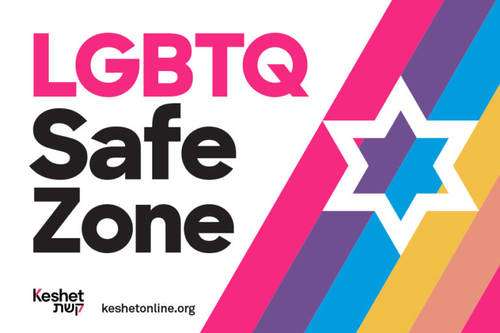Greetings from Israel!
by Rabbi Knopf
Wednesday, June 20
What a whirlwind few days it has been! We left Richmond on Sunday morning, and after many hours of travel, we arrived in Israel late Monday morning Israel time. We met our wonderful guide, Shira, and our driver Shai, and got on our cushy tour bus (complete with WiFi — this is, after all, the “Startup Nation”) to officially begin our journey. After reciting the traveler’s prayer, we headed down the road to the port city of Jaffa (where the prophet Jonah boarded a ship to Tarshish before being thrown overboard and swallowed by a big fish). We toured the narrow stone alleyways of the ancient city, learning about its place in the biblical narrative, as well as its history under Ottoman, British, and, ultimately, Israeli rule. Following a quick lunch break for falafel and special Israeli paninis called “Tostim,” we hopped back on the bus for the short trip up the coast to Tel Aviv, stopping in the first Jewish neighborhood to be built outside the walls of Jaffa, Neve Tzedek, for a presentation about Conservative Judaism and religious pluralism in Israel by my dear friend Rabbi Arie Hasit of the Masorti/Conservative community in Mazkeret Batya, near Tel Aviv. Enlightened if not a little exhausted, we bade Rabbi Hasit goodbye and checked into our beautiful beachside hotel, the Dan Panorama. We checked in, got settled, relaxed a bit, and then had a festive first night dinner together at an incredible Yemenite restaurant, Maganda, where we literally stuffed ourselves full of pita, hummus, salads of all sorts, beef cigars, kabobs, and other delicacies. Our bus was a little heavier that night as we drove back to our hotel, satiated and tired and excited about the journey ahead.
We woke up the next day refreshed and eager to attack the breakfast buffet. Israeli breakfast buffets are the stuff of legend: you have your typical egg and omelet stations, of course, as well as your pancakes, waffles, cereals, yogurts, and fruit. But no other breakfast buffet in the world has a bakery’s worth of bread and pastry options, assortments of gourmet cheeses, and expansive salad bars as far as the eye can see. And just when you thought you had seen (and eaten) everything, you discover that there’s still an entire section of Asian food, and you don’t have any room left on your plate, and you need all of a sudden to unlearn everything you’ve learned about what breakfast is supposed to be.
After (over)filling our bellies, we began a day of exploring Tel Aviv, getting a feel for the first, biggest, and most cosmopolitan Hebrew city, and learning about the place of Tel Aviv in the history of the state. Our first stop was Independence Hall, where David Ben-Gurion declared Israel’s independence on May 14, 1948, saying “by virtue of our natural and historic right and on the strength of the resolution of the United Nations General Assembly, hereby declare the establishment of a Jewish state in Eretz-Israel, to be known as the State of Israel.” There, we began a conversation that continues throughout our trip: how the modern state of Israel navigates the tensions between honoring ancient history and contending with contemporary reality, between religious traditions and secular values, between maintaining a Jewish character and advancing democratic ideals. We paused this important conversation to stroll through the Nachalat Binyamin and Carmel markets for a bite to eat and a taste of contemporary Tel Aviv life.
After eating and shopping, we visited the Palmach Museum, which vividly told the story of the most elite unit of the fledgling Jewish state’s defense forces, reminding us that Israel was created and is sustained only through tremendous effort and extraordinary sacrifice. After a moving morning, our emotional journey through Israel’s history continued just up the road at the Yitzchak Rabin Center, where we followed the journey of the slain Prime Minister (and, with him, of the Jewish state itself) from Rabin’s days as a Palmach commander through his time as the army Chief of Staff (when he helped orchestrate Israel’s miraculous victory in the Six Day War) through his political career, which culminated in his assassination at the hands of a religious Jewish extremist. The Rabin Center exposed us to the rifts in contemporary Israeli society which, in large part, remain along the fault lines present at the state’s founding that we began exploring at Independence Hall, alerting us to the enduring challenges and complexities of this extraordinary yet complicated place. We ended the afternoon by paying our respects at Rabin Square, the place where Rabin was gunned down following a rally in support of the peace process. We balanced out this long and emotional day with an evening of relaxing at the beach, grabbing dinner at one of Tel Aviv’s chic cafes, and resting up before another full day ahead.
To see more photos from our trip, click here.




